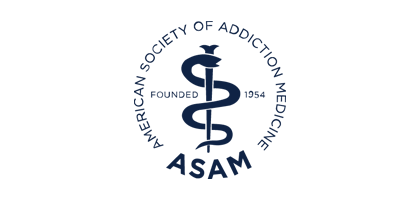Blog
Tobacco Use Disorder Should be a Priority in Addiction Treatment
The COVID-19 and opioid epidemics have left undeniable impacts on the lives of Americans in recent years. Yet there is another significant public health threat that has simmered in the background of American society for at least 60 years and is responsible for over 480,000 deaths each year: tobacco use.
On the surface, there is promising news. Tobacco smoking prevalence in the United States has reached an all-time low. Especially among youth and young adults.
However, smoking prevalence among vulnerable populations remains inordinately high. This is especially true among people with substance use disorders, among whom 65-87% smoke cigarettes compared to only 14% of adults in the general population.
These tobacco use disparities mean that people with substance use are significantly more likely to die from tobacco-related deaths. And unlike the general population, for which smoking prevalence has dropped rapidly in recent years, smoking is not decreasing among people that use drugs or alcohol.
There is no shortage of research documenting the intersection between tobacco use and other addictive disorders. The first meta-analysis was published on the topic nearly 25 years ago and found that smoking cessation interventions provided during addiction treatment increased the likelihood of long-term abstinence from alcohol and illicit drugs by 25%.
Yet despite this long-held knowledge, many addiction treatment centers remain hesitant to incorporate smoking cessation into treatment planning. A recent national-level survey study found that only 64% of patients in substance use disorder (SUD) treatment were screened for tobacco use. And less than one in four facilities offered evidence-based pharmacotherapies to help them quit tobacco.
For Brian Hurley, MD, MBA, FAPA, DFASAM, an addiction psychiatrist, president-elect of ASAM, and the medical director of the Division of Substance Abuse Prevention and Control for the Los Angeles County Department of Public Health, there is a lack of widespread organizational readiness to identify and treat tobacco use disorder, which leads to tobacco use to be deprioritized or unaddressed altogether in addiction treatment settings.
“Historically, tobacco product use and tobacco treatment have been deprioritized and overlooked as compared with other addictive disorders. An additional challenge is the lack of widely adopted standards for addressing tobacco use disorder in addiction treatment settings, compounded by payers and regulators carving treatment for tobacco addictions away from the treatment of other addictions. As a result, clinicians generally do not provide medically necessary treatment for tobacco use disorder that is sorely needed within specialty substance use treatment settings.”
Exacerbating these issues are misconceptions about the benefits of addressing tobacco use when a person is also struggling with other addictions. Many clinicians mistakenly believe that encouraging patients to stop tobacco use may disrupt their success at stopping other substance use. These beliefs are not supported by evidence, which in fact demonstrates that tobacco cessation can help, not hinder, addiction treatment interventions.
Despite these challenges, new efforts are underway to prioritize tobacco cessation in the context of addiction treatment.
The American Society of Addiction Medicine has released brief guidance on integrating tobacco use disorder interventions in addiction treatment. The guidance points to four primary recommendations.
- Screen all patients for tobacco use disorder.
- Offer evidence-based treatment to all patients with tobacco use disorder.
- Use motivational and harm reduction strategies for patients ambivalent about quitting,
- Implement organizational policies to support treatment of tobacco use disorder.
There are also promising state-level efforts. California recently passed legislation requiring certified addiction treatment programs to assess all patients for the use of tobacco products, to educate patients about how continued use could affect their recovery, and offer treatment or referral for treatment to quit smoking.
Dr. Hurley also sees room for unrealized opportunities in improving tobacco use disorder treatment health insurance coverage, including leveraging existing standards.
“Addressing tobacco use disorder is not more complex than treating other addictions. There are established, evidence-based treatments that can support patients in addressing their tobacco product use. The benefits of smoking treatment include enhanced recovery from other substance use, highlighting the importance of addressing tobacco use while treating for other addictions.”
For additional resources for patients and providers please visit the UCSF Smoking Cessation Leadership Center or share your stories using the hashtag #iCOVIDQuit
Download Tobacco Integrating Tobacco Use Disorder Interventions in Addiction Treatment Guide
Authored by: Annie Kleykamp, PhD


27b70615-d214-4671-8499-2407312a7031.png?sfvrsn=131b083f_1)

.png?sfvrsn=5c278de7_1)
.png?sfvrsn=ec33ebd9_1)